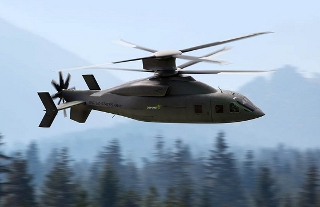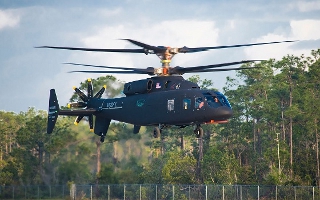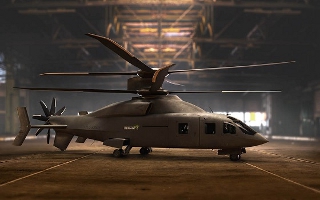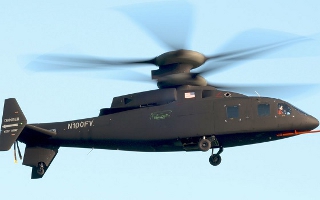 |
| January 11, 2022 | Volume 18 Issue 02 |
Motion Control News & Products
Designfax weekly eMagazine
Archives
Partners
Manufacturing Center
Product Spotlight
Modern Applications News
Metalworking Ideas For
Today's Job Shops
Tooling and Production
Strategies for large
metalworking plants
Overhung load adaptors provide load support and contamination protection
 Overhung load adaptors (OHLA) provide both overhung radial and axial load support to protect electrified mobile equipment motors from heavy application loads, extending the lifetime of the motor and alleviating the cost of downtime both from maintenance costs and loss of production. They seal out dirt, grime, and other contaminants too. Zero-Max OHLAs are available in an extensive offering of standard models (including Extra-Duty options) for typical applications or customized designs.
Overhung load adaptors (OHLA) provide both overhung radial and axial load support to protect electrified mobile equipment motors from heavy application loads, extending the lifetime of the motor and alleviating the cost of downtime both from maintenance costs and loss of production. They seal out dirt, grime, and other contaminants too. Zero-Max OHLAs are available in an extensive offering of standard models (including Extra-Duty options) for typical applications or customized designs.
Learn more.
Why choose electric for linear actuators?
 Tolomatic has been delivering a new type of linear motion technology that is giving hydraulics a run for its money. Learn the benefits of electric linear motion systems, the iceberg principle showing total cost of ownership, critical parameters of sizing, and conversion tips.
Tolomatic has been delivering a new type of linear motion technology that is giving hydraulics a run for its money. Learn the benefits of electric linear motion systems, the iceberg principle showing total cost of ownership, critical parameters of sizing, and conversion tips.
Get this informative e-book. (No registration required)
New AC hypoid inverter-duty gearmotors
 Bodine Electric Company introduces 12 new AC inverter-duty hypoid hollow shaft gearmotors. These type 42R-25H2 and 42R-30H3 drives combine an all-new AC inverter-duty, 230/460-VAC motor with two hypoid gearheads. When used with an AC inverter (VFD) control, these units deliver maintenance-free and reliable high-torque output. They are ideal for conveyors, gates, packaging, and other industrial automation equipment that demands both high torque and low power consumption from the driving gearmotor.
Bodine Electric Company introduces 12 new AC inverter-duty hypoid hollow shaft gearmotors. These type 42R-25H2 and 42R-30H3 drives combine an all-new AC inverter-duty, 230/460-VAC motor with two hypoid gearheads. When used with an AC inverter (VFD) control, these units deliver maintenance-free and reliable high-torque output. They are ideal for conveyors, gates, packaging, and other industrial automation equipment that demands both high torque and low power consumption from the driving gearmotor.
Learn more.
Next-gen warehouse automation: Siemens, Universal Robots, and Zivid partner up
 Universal Robots, Siemens, and Zivid have created a new solution combining UR's cobot arms with Siemens' SIMATIC Robot Pick AI software and Zivid's 3D sensors to create a deep-learning picking solution for warehouse automation and intra-logistics fulfillment. It works regardless of object shape, size, opacity, or transparency and is a significant leap in solving the complex challenges faced by the logistics and e-commerce sectors.
Universal Robots, Siemens, and Zivid have created a new solution combining UR's cobot arms with Siemens' SIMATIC Robot Pick AI software and Zivid's 3D sensors to create a deep-learning picking solution for warehouse automation and intra-logistics fulfillment. It works regardless of object shape, size, opacity, or transparency and is a significant leap in solving the complex challenges faced by the logistics and e-commerce sectors.
Read the full article.
Innovative DuoDrive gear and motor unit is UL/CSA certified
 The DuoDrive integrated gear unit and motor from NORD DRIVE-SYSTEMS is a compact, high-efficiency
solution engineered for users in the fields of intralogistics, pharmaceutical, and the food and beverage industries. This drive combines a IE5+ synchronous motor and single-stage helical gear unit into one compact housing with a smooth, easy-to-clean surface. It has a system efficiency up to 92% and is available in two case sizes with a power range of 0.5 to 4.0 hp.
The DuoDrive integrated gear unit and motor from NORD DRIVE-SYSTEMS is a compact, high-efficiency
solution engineered for users in the fields of intralogistics, pharmaceutical, and the food and beverage industries. This drive combines a IE5+ synchronous motor and single-stage helical gear unit into one compact housing with a smooth, easy-to-clean surface. It has a system efficiency up to 92% and is available in two case sizes with a power range of 0.5 to 4.0 hp.
Learn more.
BLDC flat motor with high output torque and speed reduction
 Portescap's 60ECF brushless DC slotted flat motor is the newest frame size to join its flat motor portfolio. This 60-mm BLDC motor features a 38.2-mm body length and an outer-rotor slotted configuration with an open-body design, allowing it to deliver improved heat management in a compact package. Combined with Portescap gearheads, it delivers extremely high output torque and speed reduction. Available in both sensored and sensorless options. A great choice for applications such as electric grippers and exoskeletons, eVTOLs, and surgical robots.
Portescap's 60ECF brushless DC slotted flat motor is the newest frame size to join its flat motor portfolio. This 60-mm BLDC motor features a 38.2-mm body length and an outer-rotor slotted configuration with an open-body design, allowing it to deliver improved heat management in a compact package. Combined with Portescap gearheads, it delivers extremely high output torque and speed reduction. Available in both sensored and sensorless options. A great choice for applications such as electric grippers and exoskeletons, eVTOLs, and surgical robots.
Learn more and view all the specs.
Application story: Complete gearbox and coupling assembly for actuator system
 Learn how GAM engineers not only sized and selected the appropriate gear reducers and couplings required to drive two ball screws in unison using a single motor, but how they also designed the mounting adapters necessary to complete the system. One-stop shopping eliminated unnecessary components and resulted in a 15% reduction in system cost.
Learn how GAM engineers not only sized and selected the appropriate gear reducers and couplings required to drive two ball screws in unison using a single motor, but how they also designed the mounting adapters necessary to complete the system. One-stop shopping eliminated unnecessary components and resulted in a 15% reduction in system cost.
Read this informative GAM blog.
Next-gen motor for pump and fan applications
 The next evolution of the award-winning Aircore EC motor from Infinitum is a high-efficiency system designed to power commercial and industrial applications such as HVAC fans, pumps, and data centers with less energy consumption, reduced emissions, and reduced waste. It features an integrated variable frequency drive and delivers upward of 93% system efficiency, as well as class-leading power and torque density in a low-footprint package that is 20% lighter than the previous version. Four sizes available.
The next evolution of the award-winning Aircore EC motor from Infinitum is a high-efficiency system designed to power commercial and industrial applications such as HVAC fans, pumps, and data centers with less energy consumption, reduced emissions, and reduced waste. It features an integrated variable frequency drive and delivers upward of 93% system efficiency, as well as class-leading power and torque density in a low-footprint package that is 20% lighter than the previous version. Four sizes available.
Learn more.
Telescoping linear actuators for space-constrained applications
 Rollon's new TLS telescoping linear actuators enable long stroke lengths with minimal closed lengths, which is especially good for applications with minimal vertical clearance. These actuators integrate seamlessly into multi-axis systems and are available in two- or three-stage versions. Equipped with a built-in automated lubrication system, the TLS Series features a synchronized drive system, requiring only a single motor to achieve motion. Four sizes (100, 230, 280, and 360) with up to 3,000-mm stroke length.
Rollon's new TLS telescoping linear actuators enable long stroke lengths with minimal closed lengths, which is especially good for applications with minimal vertical clearance. These actuators integrate seamlessly into multi-axis systems and are available in two- or three-stage versions. Equipped with a built-in automated lubrication system, the TLS Series features a synchronized drive system, requiring only a single motor to achieve motion. Four sizes (100, 230, 280, and 360) with up to 3,000-mm stroke length.
Learn more.
Competitively priced long-stroke parallel gripper
 The DHPL from Festo is a new generation of pneumatic long-stroke grippers that offers a host of advantages for high-load and high-torque applications. It is interchangeable with competitive long-stroke grippers and provides the added benefits of lighter weight, higher precision, and no maintenance. It is ideal for gripping larger items, including stacking boxes, gripping shaped parts, and keeping bags open. It has high repetition accuracy due to three rugged guide rods and a rack-and-pinion design.
The DHPL from Festo is a new generation of pneumatic long-stroke grippers that offers a host of advantages for high-load and high-torque applications. It is interchangeable with competitive long-stroke grippers and provides the added benefits of lighter weight, higher precision, and no maintenance. It is ideal for gripping larger items, including stacking boxes, gripping shaped parts, and keeping bags open. It has high repetition accuracy due to three rugged guide rods and a rack-and-pinion design.
Learn more.
Extend your range of motion: Controllers for mini motors
 FAULHABER has added another extremely compact Motion Controller without housing to its product range. The new MC3603 controller is ideal for integration in equipment manufacturing and medical tech applications. With 36 V and 3 A (peak current 9 A), it covers the power range up to 100 W and is suitable for DC motors with encoder, brushless drives, or linear motors.
FAULHABER has added another extremely compact Motion Controller without housing to its product range. The new MC3603 controller is ideal for integration in equipment manufacturing and medical tech applications. With 36 V and 3 A (peak current 9 A), it covers the power range up to 100 W and is suitable for DC motors with encoder, brushless drives, or linear motors.
Learn more.
When is a frameless brushless DC motor the right choice?
 Frameless BLDC motors fit easily into small, compact machines that require high precision, high torque, and high efficiency, such as robotic applications where a mix of low weight and inertia is critical. Learn from the experts at SDP/SI how these motors can replace heavier, less efficient hydraulic components by decreasing operating and maintenance costs. These motors are also more environmentally friendly than others.
Frameless BLDC motors fit easily into small, compact machines that require high precision, high torque, and high efficiency, such as robotic applications where a mix of low weight and inertia is critical. Learn from the experts at SDP/SI how these motors can replace heavier, less efficient hydraulic components by decreasing operating and maintenance costs. These motors are also more environmentally friendly than others.
View the video.
Tiny and smart: Step motor with closed-loop control
 Nanotec's new PD1-C step motor features an integrated controller and absolute encoder with closed-loop control. With a flange size of merely 28 mm (NEMA 11), this compact motor reaches a max holding torque of 18 Ncm and a peak current of 3 A. Three motor versions are available: IP20 protection, IP65 protection, and a motor with open housing that can be modified with custom connectors. Ideal for applications with space constraints, effectively reducing both wiring complexity and installation costs.
Nanotec's new PD1-C step motor features an integrated controller and absolute encoder with closed-loop control. With a flange size of merely 28 mm (NEMA 11), this compact motor reaches a max holding torque of 18 Ncm and a peak current of 3 A. Three motor versions are available: IP20 protection, IP65 protection, and a motor with open housing that can be modified with custom connectors. Ideal for applications with space constraints, effectively reducing both wiring complexity and installation costs.
Learn more.
Closed loop steppers drive new motion control applications
 According to the motion experts at Performance Motion Devices, when it comes to step motors, the drive technique called closed loop stepper is making everything old new again and driving a burst of interest in the use of two-phase step motors. It's "winning back machine designers who may have relegated step motors to the category of low cost but low performance."
According to the motion experts at Performance Motion Devices, when it comes to step motors, the drive technique called closed loop stepper is making everything old new again and driving a burst of interest in the use of two-phase step motors. It's "winning back machine designers who may have relegated step motors to the category of low cost but low performance."
Read this informative Performance Motion Devices article.
Intelligent compact drives with extended fieldbus options
 The intelligent PD6 compact drives from Nanotec are now available with Profinet and EtherNet/IP. They combine motor, controller, and encoder in a space-saving package. With its 80-mm flange and a rated power of 942 W, the PD6-EB is the most powerful brushless DC motor of this product family. The stepper motor version has an 86-mm flange (NEMA 34) and a holding torque up to 10 Nm. Features include acceleration feed forward and jerk-limited ramps. Reduced installation time and wiring make the PD6 series a highly profitable choice for machine tools, packaging machines, or conveyor belts.
The intelligent PD6 compact drives from Nanotec are now available with Profinet and EtherNet/IP. They combine motor, controller, and encoder in a space-saving package. With its 80-mm flange and a rated power of 942 W, the PD6-EB is the most powerful brushless DC motor of this product family. The stepper motor version has an 86-mm flange (NEMA 34) and a holding torque up to 10 Nm. Features include acceleration feed forward and jerk-limited ramps. Reduced installation time and wiring make the PD6 series a highly profitable choice for machine tools, packaging machines, or conveyor belts.
Learn more.
Sikorsky-Boeing unveil updated advanced assault helicopter: DEFIANT X
A development partnership between Sikorsky and Boeing has released new details of its advanced helicopter for the U.S. Army's Future Long Range Assault Aircraft competition (FLRAA). Named DEFIANT X, the coaxial rotor aircraft aims to be the fastest, most maneuverable, and most survivable assault helicopter in history. DEFIANT X is an updated/modified version of the team's SB-1 Defiant, which had its first flight in March 2019.

All images are of DEFIANT X. [Images courtesy: Boeing/Sikorsky]
With its two coaxial main rotors and rear-mounted, all-electric pusher propulsor, the single-engine DEFIANT X is unlike production rotorcraft available today. It represents what its designers think is a leap forward in technology to achieve the U.S. government's desire for vast increases in speed and range, while improving maneuverability and survivability in a cost-effective way.
Boeing says, "DEFIANT X will fly low and fast through complex terrain, land quickly, deliver soldiers and equipment to the objective area (referred to as 'the X'), and get out."

"Defiant is designed to fly at nearly twice the speed and has twice the range of conventional helicopters while retaining the very best, if not better low-speed and hover performance of conventional helicopters," said Dan Spoor, vice president, Sikorsky Future Vertical Lift, back in June 2020 when the SB-1 Defiant was being put through extra testing. "This design provides for exceptional performance in the objective area, where potential enemy activity places a premium on maneuverability, survivability, and flexibility."
The U.S. Army has a stated goal to replace the UH-60 Black Hawk helicopter in fiscal year 2030. The DEFIANT X is one of two designs being considered as replacements in the FLRAA program as part of the Army's Future Vertical Lift (FVL) initiative, the Army's No. 3 modernization priority area.
The winning design will be required to blend airplane-like speeds with helicopter-like maneuverability. The aircraft will need to maintain 100% maximum continuous power, medical evacuation capabilities, and (per guidelines) have the ability to perform a 500-ft-per-min. vertical rate of climb. It will have to soar at 6,000 ft in 95-degree heat, with up to 12 passengers and for roughly 1,725 nautical miles one way without refueling. The program's objective cruise speed is 280 knots, or roughly 320 mph.
Bell Textron's part-aircraft, part-helicopter design called the Bell V-280 Valor is the other contender. So far, Valor, which sports two transformational tiltrotors, has flown at speeds around 200 knots (230 mph) in testing. It includes a fly-by-wire flight control system.
On a flight test last year, the SB-1 Defiant demonstrator proved it was faster than the long-in-service Black Hawk by reaching 205 knots (236 mph).

The Sikorsky-Boeing DEFIANT X is counting on its X2 Technology (counter-rotating blade) design to make it the U.S. Army's top choice due to its scalability to a variety of military missions such as attack and assault, long-range transportation, infiltration, and resupply.
X2 was first developed on Sikorsky's two-seater XH-59A prototype, which made significant improvements in vibration reduction, weight reduction, and blade technology. It boasts improved hover performance, rapid maneuverability, and crisp control response due to the rigid rotor -- all while maintaining helicopter-like performance at low speeds.
The X2 Technology is also used in the smaller Sikorsky RAIDER X demonstrator, a high-speed scout and attack compound copter that has already proven a maximum cruise speed of 253 knots (291 mph). Sikorsky Chief Test Pilot Bill Fell said back in 2019 that the low- and high-speed maneuverability of an X2 Technology flyer -- which can fly at as much as 60-plus degrees of bank -- and the ability to hover in high altitudes and hot conditions "make a helicopter fly more like a tactical jet aircraft than a classic rotorcraft."

The DEFIANT X can hold a crew of four. It has fly-by-wire flight controls, manually foldable blades to reduce space requirements during parking, a composite fuselage, and retractable landing gear.
Jerry Drelling, a Boeing spokesperson, told Designfax exclusively that the DEFIANT X differs from the SB-1 Defiant in some important ways. One feature is a combat-ready weapon system designed to the Army's new mission set, including:
- Enhancements to the design to reduce thermal signature and improve aerodynamic handling;
- Tricycle-design landing gear, which improves stability and landing and taxiing in combat and austere environments;
- Changes to the exhaust system, reducing thermal signature; and
- An integrated mission systems package enabling joint all-domain operations (JADO) and, through modular open systems approach (MOSA), continued upgrades to combat an ever-changing/evolving threat and system to maintain relevance in the 2035 battlefield.
Drelling added that the aircraft also features enhanced maneuverability and survivability, which includes fly-by-wire flight controls integrated with an autonomy capability, which lead to safety and workload reduction for the crew and operations in complex and degraded visual environments.
Drelling also pointed out that the DEFIANT X is designed for growth. It's "the only FLRAA solution that can do external lift missions at an operationally relevant distance, which gives the Army increased capability and operational flexibility," he said. Also, "The aircraft can handle additional weight without having to grow the rotor diameter or the engine size. So, any additional equipment, survivability features, payload (including external lift) can be handled without a significant and costly redesign of key dynamic components."

According to a Jan. 25, 2021, Defense News article, "The 'enhancements to the [DEFIANT X] design' are born from roughly 1,500 hours running algorithms in a systems integration lab, 135 hours logged in the Propulsion Systems Test Bed, and 31 flights, adding up to 26 hours of flight time."
According to a Feb. 26, 2020, article on Business Insider by Matthew Cox of Military.com, "Test pilots on Defiant [SB-1] said they love the [electric] rear pusher prop, which is designed to provide revolutionary thrust, but are also comforted that it can take direct hits in combat without causing catastrophic failure to the aircraft."
The article also says, "The pusher prop can also be reversed very quickly to provide negative thrust for quick braking power, and then turned off for a quieter sound signature."
The U.S. Army has stated no official date for the downselect of the final, winning design, but fiscal year 2022 has been mentioned in several reports as the soft target. The technological readiness of both competing designs as well as evolving military budgets will influence the final selection timeline.
Sikorsky is a Lockheed Martin Company.
Learn more about DEFIANT X at boeing.com/defiantx.
Sources: Boeing/Sikorsky, Business Insider, Defense News
Published February 2021
Rate this article
View our terms of use and privacy policy

